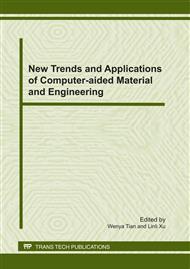p.541
p.546
p.552
p.556
p.560
p.565
p.570
p.576
p.581
Soft Sensor Modeling via Support Vector Regression with KICA-Based Feature Extraction
Abstract:
A novel two-level integrated soft sensor modeling method using kernel independent component analysis (KICA) and support vector regression (SVR) is proposed for chemical processes. In the first level, the KICA approach is adopted to extract information of input variables in the high dimensional feature space. Based on this strategy, the correlation of input variables can be eliminated and thus the complexity is reduced. Then, the model is established using SVR in the second level. The KICA-SVR soft sensor modeling method is applied to estimate product compositions in the Tennessee Eastman process. The obtained results show that it can exhibit better performance, compared to the traditional ICA, principal component analysis (PCA) and kernel PCA based information extraction methods, under different operating conditions.
Info:
Periodical:
Pages:
560-564
Citation:
Online since:
January 2011
Authors:
Price:
Сopyright:
© 2011 Trans Tech Publications Ltd. All Rights Reserved
Share:
Citation:


